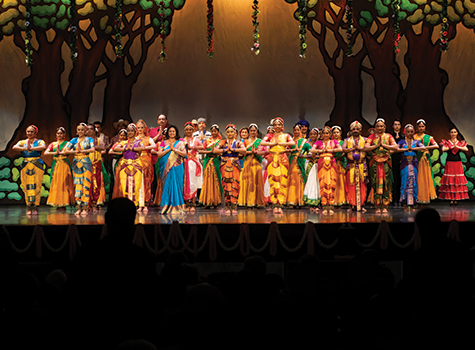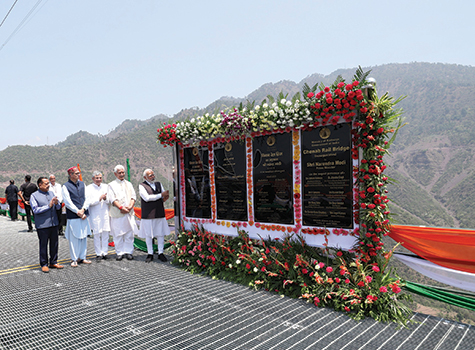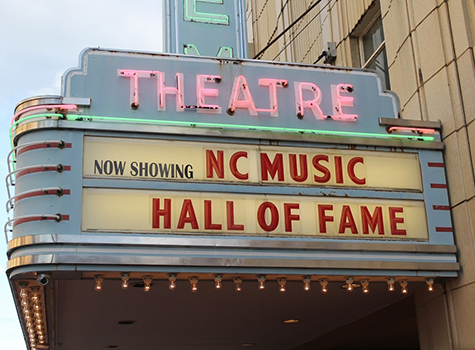
The 21st anniversary of Dances of India production was a success. This year we had 50 plus participants and showcased the dances of Lord Shiva and his family. We also followed storytelling through folk traditions. I want to thank everyone who contributed to the continued success of this show and the dancers for their unwavering dedication to classical dances. Without the dedication of parents and students, I would not have completed 83 arangetrams/dance graduations thus far.
People often ask me as to why I am sticking with only traditional dance styles and not open to incorporating Bollywood in my show. In my opinion, everything has its own place. It all depends on the individual teacher’s own vision and passion. My passion is traditional dance styles that include classical dances and traditional folk dances.
I love to research and learn about the influences of Indian dances on world cultures. I want to show people visually our similarities and differences. Our signature dance, “Unity in Diversity” has been acclaimed by many for its uniqueness and the beauty of inclusion. I believe when you know where you are coming from, it is easier to understand where you are going.
Since the age of 5, I have had a strong desire to dance. My father nourished my wishes. I discovered that dancing was not predicated upon the movements of legs and arms, but that it grew from an inner urge for prayer in motion. I see many of my students in the same light. Either the parents are fulfilling their own unmet dreams through their children, or the students want to experience the energy of dancing. My students’ enthusiasm, motivation, energy, and happiness while dancing is totally contagious. Their hard work and my creativity are a fine blend of success. Even my students who completed their arangetrams have worked very hard while in college and performed flawlessly for the show.
Even though the demand for classical dances is not as high as it used to be prior to the pandemic, there is still a demand for classical dances. These dances not only teach discipline, but also stories from the Hindu religion and traditions, long term commitment to an art form that is very difficult to learn and a perfect balance of right and left brains. The stories told through dances are not known even to some of the new generation of Indians coming to the USA. Many of my students have been admitted into prestigious colleges due to their long-term commitment to these classical dance forms and training. When these students commit to the traditional dance forms for 7 to 10 years, their commitment to achieve their goals is apparent. They usually write amazing personal statements and essays for their college applications that reflect their passion and the influence of these dance forms on their life. This life-changing experience stays with the students as a guiding light to achieve many things they aspire to as they grow older.
Several people also ask me about the language barrier these second-generation Indians face in this country. They wonder how these students can express the stories told through dancing so beautifully. This language barrier is not unique to the second generation. As India has so many spoken languages, it is almost impossible to learn them all. As teachers/gurus we explain the stories to the students to bring out the inner emotions of storytelling using dance as a medium.
Many teachers, who moved to and made the USA their home, have a great opportunity to take it out of India and spread these seeds of culture. Many of the Indian dance teachers in the USA teach these dances to support themselves financially. They have to include in their teachings many non-classical dance styles to survive. Some teachers like me may want more out of it, such as reintroducing our culture to our own Indian community, introducing the culture to the non-Indian community, and building recognition, appreciation, and interest along with a respect for our culture. We all have to learn to grow.
In my opinion, with the continued interest and popularity of Indian classical dances, the need and search for authentic exposition is pressing and dance shows of this dimension and character is indeed the need of the hour. Indian art is a science, a discipline, an art and an exposition at the same time. With the co-operation, philanthropy, and good will of the art lovers of the USA, I am confident of promoting and fostering an appreciable understanding of the ancient cultural heritage of India among the aesthetic public.
Arts are not to be restrained from sharing with others. They are suitable for all cultures. In my opinion, the future of Dances of India looks strong, and this annual production gives me the opportunity to share with pride my Indian heritage.
For questions or comments, contact Dr. Maha Gingrich via email at GingrichMaha@gmail.com.



